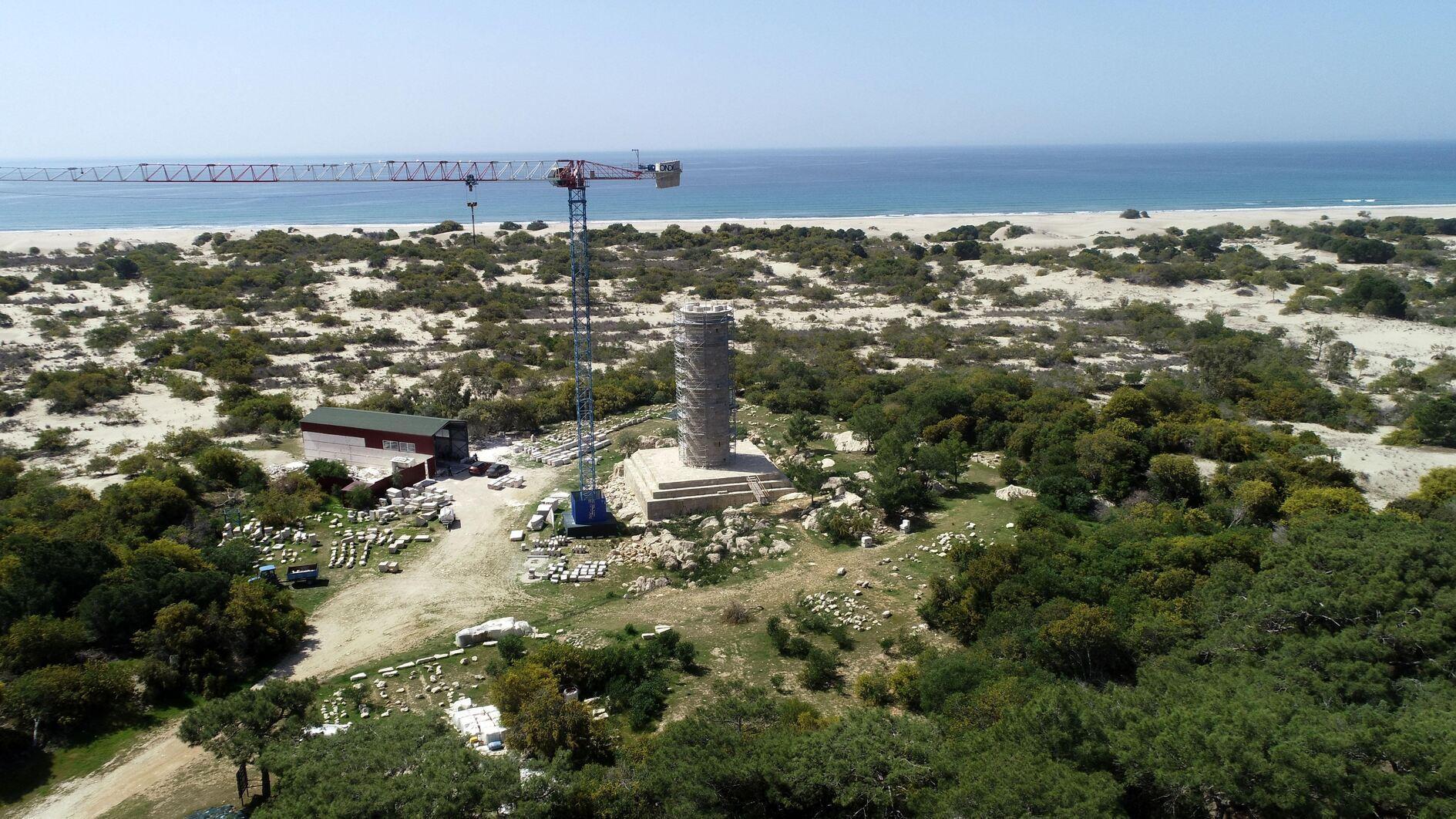
Excavation and restoration work continues in the ancient city of Patara, once the capital of the Lycian Union, which consisted of 23 cities in the mid-1st century B.C. in the Kaş district of the southern province of Antalya.
Restoration of the 2,000-year-old lighthouse in the ancient city is almost finished. The historical structure, which was destroyed by an earthquake and rebuilt with nearly 2,000 stones, is intended to guide sailors.
Head of the Patara excavation, Professor Havva İşkan Işık mused, "Patara has become a child for me. Especially the lighthouse is completely different for me. Maybe we can turn on the light of the lighthouse. It would be very meaningful."
Işık stated that the work on the lighthouse started after 2020 was declared the “Year of Patara.” Pointing out that very fine and meticulous work is required in the lighthouse, she stated, “Bringing the lighthouse to this state constitutes one of the most difficult restoration projects in the world. No stone of the lighthouse had the same form and appearance as another. Each stone is specially produced for its location.”
Noting that they tried to find the location of the stones using 3D modeling programs, Işık said, "First, we try to find the location of the stones in the computer environment. It is not an easy task. It took time to repair and consolidate the stones because they were exposed to sea water and wind for a long time."
Stating that the work on the lighthouse has come to an end, Işık said, "This is good news. The lighthouse will be completely revived and running in a very short time. There are months left. Work continues on the arch, which is the top section. At the end of four to five months, we will see the dome of the arch."
Stating that the lighthouse guided ships in ancient times and that this purpose should be continued today, Işık added, "What I want is for the lighthouse to have the same function again as it was built for. Large ships pass by the seaside every night. There should be an announcement saying, 'We are on the Turkish coast. We are passing in front of Patara Lighthouse.’ This would be very good for the promotion of our country."
Işık stated that the restoration of the Patara Lighthouse was quite difficult, but she enjoyed it immensely.
Observing that women working in archaeological excavations and restoration works also have an important duty, she said, “Women of archeology treat all artifacts as their children. Patara also became a child for me. Especially the lighthouse is completely different for me. We replaced around 1,600 stones. It will be around 1,800 when finished.”
Located at the southwestern end of the old Patara port, which connects the Mediterranean to the Xanthos River, the lighthouse was built by Roman Emperor Nero in 64 AD. It was destroyed by an earthquake and subsequent tsunami in Rhodes in 1481.
The ruins of the lighthouse were discovered in 2000 by Fahri Işık, the head of the excavation at the time, and later unearthed by Havva İşkan Işık, who took over the excavation directorate.